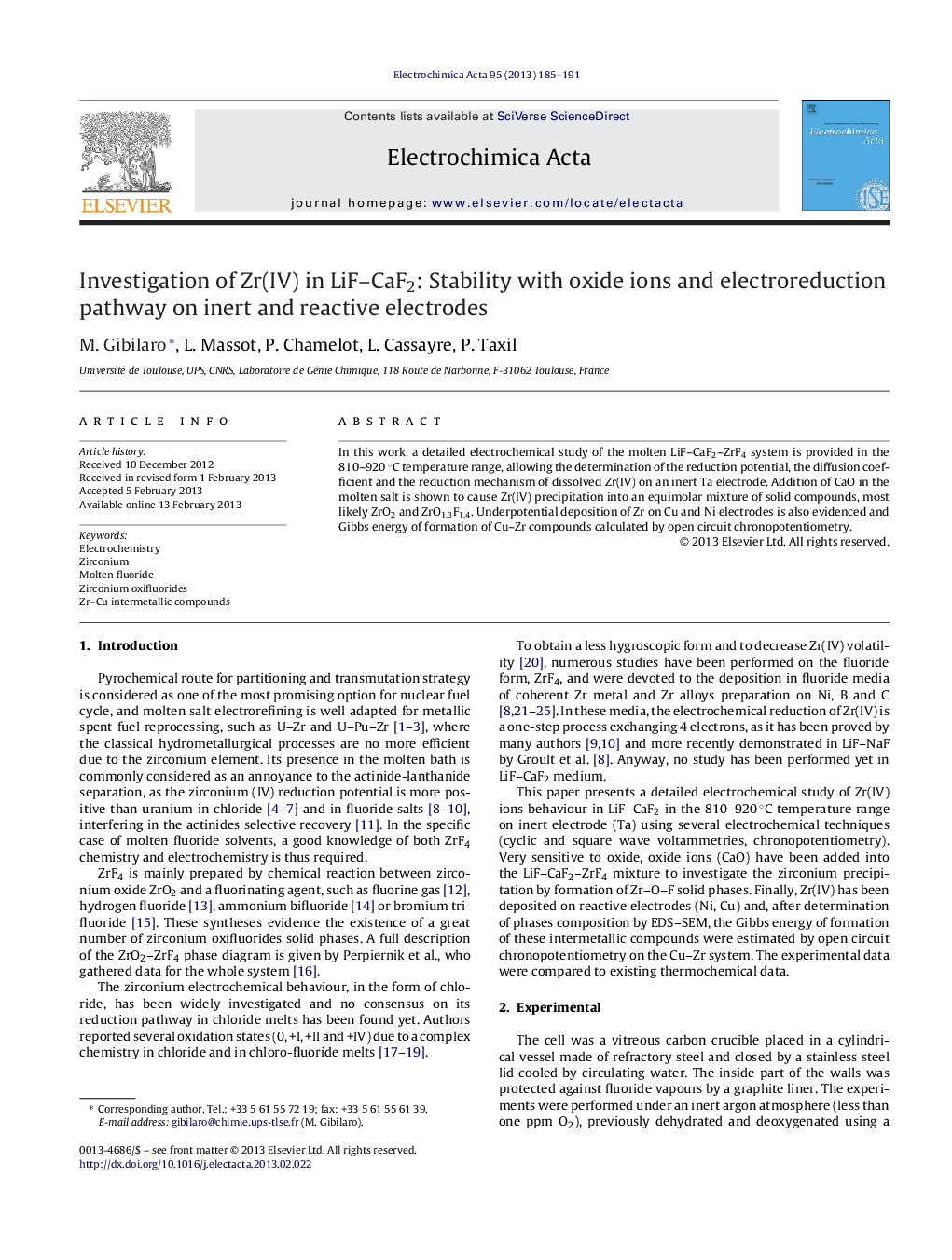| Article ID | Journal | Published Year | Pages | File Type |
|---|---|---|---|---|
| 187227 | Electrochimica Acta | 2013 | 7 Pages |
Abstract
In this work, a detailed electrochemical study of the molten LiF–CaF2–ZrF4 system is provided in the 810–920 °C temperature range, allowing the determination of the reduction potential, the diffusion coefficient and the reduction mechanism of dissolved Zr(IV) on an inert Ta electrode. Addition of CaO in the molten salt is shown to cause Zr(IV) precipitation into an equimolar mixture of solid compounds, most likely ZrO2 and ZrO1.3F1.4. Underpotential deposition of Zr on Cu and Ni electrodes is also evidenced and Gibbs energy of formation of Cu–Zr compounds calculated by open circuit chronopotentiometry.
Related Topics
Physical Sciences and Engineering
Chemical Engineering
Chemical Engineering (General)
Authors
M. Gibilaro, L. Massot, P. Chamelot, L. Cassayre, P. Taxil,
